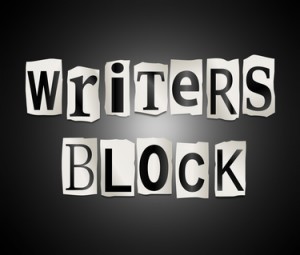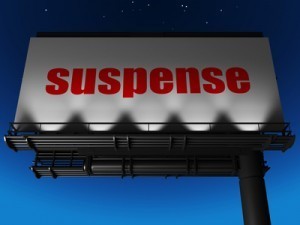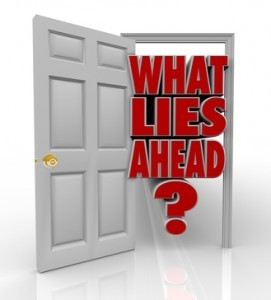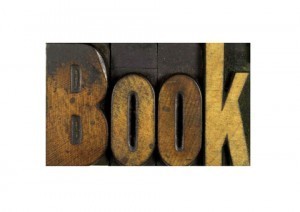Ruth Ford Elward's Blog, page 6
March 25, 2015
Book Blurbs
For freely offered writing Resources go to RuthFordElward.com
BOOK BLURBS
Avid book readers generally try to get a rundown of what a book’s plot is all about before they take it home. Blurbs are very effective selling tools, they are a concise narrative of what readers can expect from a book without divulging too much. Yet a blurb is written to grab the reader’s attention.
A side from something to read on the back of your book cover, blurbs can also be used:
• as a component of a proposal to a potential publisher
• as your promotional page content when selling online
• as your intro for an article to be submitted
• as part of your application or bio as a writer
• as a brief opening to be used by an interviewer introducing you 
The book blurb can lead to either your book being picked up or returned to the shelf. It entails explaining the contents of your book in a few concise sentences but in a manner just like an elevator pitch – an escalating sales pitch.
A blurb is devoid of a spoiler. It is designed to arouse curiosity and encourage a reader to buy and read the whole book. It can be as long as two paragraphs but whatever you do, make sure that your blurb does not provide answers to issues that you have created in your story.
March 18, 2015
How to Overcome the So-Called Writers Block
For freely offered writing Resources go to RuthFordElward.com
HOW to OVERCOME the SO-CALLED WRITERS BLOCK
Every writing genre does not only have its own set of rules, it also has its own unique list of challenges. Whether its adventure, suspense, mystery or romance, every episode, every chapter has to be carefully thought out before the story is laid out. And every genre requires a totally different mind-set.
For example, if you are writing a romance novel, you may need to prepare the setting for the eventual meeting of the two main characters and build the story from there.
However, if it’s a mystery that you want to write about, you have to keep the reader in the dark. It requires coming up with a plot that does not reveal anything until the climax of the story. It has to be written in such a way that the reader is unable to figure out what really happens in the end.
In the mystery novel genre, the writer has the option to disclose or not the identity of the antihero and it is up to him on how he can build the suspense and anticipation on the type of setting that he has chosen.

Being able to write a novel can be quite challenging, especially if you do not know where to begin. Some writers take months while others spend years to complete an entire book.
Here are common stumbling blocks and tips on how to overcome them.
• Try as you might, you can’t seem to come up with a great story plot. Most writers call this dilemma ‘writer’s block’. This is the part where you keep on erasing everything that you write and after a while, what you come up with is a blank page.
You are unable to start anything because you are practically clueless on what to write about. The great news is that there are solutions to this kind of dilemma.
First, you have to understand that ideas are easy to come by and what is hindering you is executing these ideas. All you have to do is imagine a situation that may baffle a group of people and don’t worry if the plot is lame. Even if it does not constitute a story, you can go back, revise and polish it later.
This is how most professional writers work. They keep on writing what enters their mind and then organize these written thoughts later.
• But what if you have truckloads of ideas but are unable to commit to any of them. The smart thing to do is gather them all up, save them in a file, and come back to them later on.
Somehow, an idea that you have come across today may match a story you are concocting in the future. And, keep in mind that if your mind is churning up so many ideas, a good one will most likely pop up sooner than later. This means that at this point in time, your brain is working in overdrive.
March 11, 2015
Formatting and Printing
For freely offered writing Resources go to RuthFordElward.com
FORMATTING AND PRINTING
Formatting
There are many platforms for formatting a book, check the distributor’s site you’ve chosen for their specific requirements before attempting. The easiest program to format from is WORD, but you will need to keep in mind that fancy headers and fonts will not transfer, so don’t bother using them.
If you’re going to include pictures, make sure that they are copyright free, or free use (pixabay.com has a wide range of such pictures) or you have purchased them with the appropriate license. When it comes time to insert them, make sure to use the ‘insert picture’ and ‘paste’ feature instead of a copy/paste as this messes with the formatting. You will also need to know how to create a ‘searchable’ Table of Contents.
For the first timer, I suggest companies like Elance, Odesk or Fiverr. For a small fee, they have people who specialize in formatting for Amazon, Smashwords Create Space and others. Formatting for various devices can be daunting and something you might want to tackle slowly.
Self-Publishing (in print publishing)
Most companies that offer print service will require a few things from you.
First, they will require you to purchase a set number of books from them (as many as 500-1000).
Companies offering a print service will require that you present the manuscript in WORD format, then often saved as a PDF. Many of them just ask for the WORD document, and then do the conversions themselves.
There are also companies that will print on demand, printing only one or two books as needed, but more often than not, the price per book is greater than what you would normally pay for such a book.
Secondly, if you print on demand, bookstores will not ask you to come for a book signing or event as there is no way for them to order in bulk at a discount.
With that aside…
Your font size should be clear and consistent throughout the entire document. You may be tempted to use decorative fonts for your intro, and they may really look great in the beginning. However, it may not be the best choice for the entire book because they may be more difficult to read compared to the standard, traditional fonts.
A lot of companies prefer the Serif Typeface because they are easier to read compared to the Sans-Serif font. The ideal Serif typefaces to use include Caslon, Century Schoolbook, and Baskerville. These fonts are available in Microsoft Word.
On the other hand, if you are publishing an eBook which would be viewed online, experts suggest Sans Serif fonts such as Optima, Verdana, and Arial because they are better rendered on the computer screen.
Always start your chapter with a new page. This can be achieved by adding a page break right after the final sentence in the previous chapter.
Don’t make a mistake by focusing on the design features of the front cover and poorly formatting your contents.
Keep in mind that the appearance of the book cover and the contents are important to an overall experience for the reader. The format of a book’s content has as much impact as the book cover design and requires the same level of careful consideration.
March 4, 2015
A Note about Publishing
For freely offered writing Resources go to RuthFordElward.com
A NOTE ABOUT PUBLISHING
There are many routes to having a published book. Until recently, the only acceptable and respectable route was that of the traditional publisher. Months were required before the author would see the rough draft (called a galley or ARC), and then it would be many more months before it hit the bookshelves. The author would have little to no say about the cover of the book, and would be afforded very little involvement in the actual creative production side of the material. The author was required to make themselves available for interviews and be willing to travel to promote the book.
Now, of course, eBooks have come onto the scene, as well as the self-publishing of hard copy books. This has set the traditional publishing houses on their proverbial ears and much of their backlash against self-publishing was, initially, justified. They claimed that the due diligence that was provided by a host of editors and publicists and other support personnel was not provided or existed with self-published books, meaning that the quality would be less.
In all honesty, initially, this was true. Some of the worst books were put into print that should never have seen the light of day. Rife and resplendent with spelling mistakes, grammatical mistakes, and plot lines that sagged, they made the case that self-published authors were publishing sub-standard work and should be avoided by the savvy consumer like the plague. This is no longer true. Many companies have come forward to help the neophyte writer with the formatting, cataloging as well as offering other support staff services, such as editing to the new writer. This insures that the end product is as good as their high rise cousins.
March 2, 2015
Ruth’s Book Review of China Lake
For freely offered writing Resources go to RuthFordElward.com
China Lake (Evan Delaney Series #1)
by Meg Gardiner
Evan Delaney worked as a journalist and legal researcher. When her brother Brian was deployed in the Navy, she went back to China Lake, her hometown, and took her nephew, Luke under her wing.
Her ex-sister-in-law, Tabitha learned about this and tried hard to gain custody of her son. But Evan Delaney refused. She knew that Tabitha joined a religious cult called Remnant.
Using her researcher skills, she learned that Tabitha actually wanted her child not because she wanted to raise him, but to offer him to the cult.
Pastor Wyoming, however, had other things in mind, and that included murder and revenge against the Delaney family.
This is another suspense-filled thriller with a heroine in the title role. The villains in this book are manipulative and dangerous, the kind with twisted minds and evil maniacal laughter.
From start to finish, Meg Gardiner delivers.
March 1, 2015
Ruth’s Book Review of Snake Skin
For freely offered writing Resources go to RuthFordElward.com
Snake Skin (Lucy Guardino FBI Thriller #1)
by C.J. Lyons
The story starts with Lucy doing transactions with a priest named Walter, interested in taking pictures of a four-year old girl Katie. Lucy although hesitant with their arrangement, agreed to take Katie to the church where Walter and his minions were waiting.
Things didn’t go as planned when a seemingly crazy mother appeared and demanded to see Katie right away. Little did they know that Lucy knew about their evil plans. She knew these were child predators, always looking out for fresh blood and new meat.
Lucy had prepared for this. But there’s one hitch. She didn’t anticipate the pond full of slithering creatures ready to strike her anytime. Lucy had to make sure she came out unscathed and unbitten by those snakes, or else, she won’t be able to make it to her daughters’ doctor’s appointment.
Yes, such is the life that Supervisory Special Agent Lucille Guardino has to live.
Snake Skin by CJ Lyons hisses with a heart-thumping and well-researched storyline.
You will find yourself gripping the edge of your seat, widening your eyes and heart beating fast with all the action-packed scenes and breathtaking suspense.
There are so many twists & turns and slitherings in this book that you will surely scream the moment you see something crawling behind you.
Author CJ Lyons, an ER doctor herself, used her past experiences in the medical world, making this book quite enjoyable and realistic.
February 25, 2015
How to Edit, Proofread, and Revise Your Work
For freely offered writing Resources go to RuthFordElward.com
HOW to EDIT, PROOFREAD and REVISE YOUR WORK
Whatever it is that you write, whether it’s an academic dissertation, a short story, or a novel, it is essential to check, revise, and edit the work before submission. Take a break from writing and use it for proofreading and revising.
This short hiatus in writing can give you a fresher outlook and helps you pay more attention to details so you can polish your craft.
With constant editing, you would be more aware of your mistakes and become watchful of them in the future. Editing and revising helps in the assessment of drafts, in reorganizing thoughts, and in clarifying points.
When editing, you have to see if your main point has been emphasized. Your work has to have a clear objective and all the events and chapters lead in that direction. This can be easier to do if you are able to identify with your purpose and your target readers.
Once you have done that, you have to look for items in your work that support your goal. If you think your work lacks depth when it comes to story structure, try adding a few more events.
If it seems that there are too many items supporting your objective, try skimming them by saving only the good pieces. This will make your story more readable and easier to understand.
Next stop – language.
You have to do a little de-cluttering by removing unclear and confusing ideas from your story. You can do this by reading your work out loud. If there are awkward pauses and muddled ideas, better straighten them out. Delete irrelevant, vague, and misused words and phrases.
At this point, you also have to go through the entire composition with a fine-toothed comb and get rid of grammar slip-ups and inaccuracies, as well as spelling and punctuation.
Some writers are able to do this effectively by making the switch from being a writer to a reader. All you have to do is detach yourself from what you have written and think of what you are doing as criticizing someone else’s composition.
If you assess your paper objectively, you would be able to pinpoint the lapses in your writing. You would be able to edit it impartially to make it better.
Once you have been writing for a while, and perhaps it will happen to you while you are in the middle of revising your manuscript, you will understand that the actual ‘craft’ of writing lies with the revision.
Your book, if you think about it, is only as good as your ability to revise it (and your willingness to revise it). Some prefer to take their rough draft and hand it out to ‘readers’ for some feedback. This is not a bad idea, but it can also lead you astray, even bruising your feelings if the feedback you receive isn’t particularly helpful or flattering.
The best types of revision happen between author and manuscript a number of times before engaging and involving anyone else. When you do involve someone else, make sure that they are trusted individuals who will be honest, but not brutally so (even if you ‘claim’ that’s what you want).
Revision involves truly fleshing out the ideas that you put on paper. It allows you to go back in and add more detail, clarify those points that seem murky now that you’re looking back over them, and allows you to ‘play’ a bit with the quirks and habits of your characters.
This happened to the screenwriters for the Jack Sparrow, Pirates of the Caribbean movie and the small monkey that was a companion to Captain Barbossa.
Neither the monkey, nor the parrot were originally part of the first draft.
February 18, 2015
Creating Suspense in Writing
For freely offered writing Resources go to RuthFordElward.com
CREATING SUSPENSE IN WRITING
When it comes to writing a novel, it’s important to have clear thoughts on what you want to happen. From your character interactions and strife to the conflicts that drive the story and finally to the resolution of issues.
This must be done in a way that makes both the characters and the reader grow.
Ultimately, by the end of the novel, the character/s should have gone through several steps from the onset of the conflict to the resolution, creating doubt to whether the character/s will be able to finish what they started.
The climax and resolution completes a part of or the entire story and should show that the character has learned a lesson from the ordeal.
The conflict which is an element of a plot, is an important part of the story, therefore, it needs to be well thought out.
During the concept phase of the story, you will have undoubtedly hashed out the main characters and what they will be doing throughout (you did do this, right?) but what about the payoff?
Unless you are trying to write the next big epic, you can find conflict and resolution from just about any experience in life.
Here is a very simple example:
• Story: Boy meets girl in a bistro and they agree to meet again. She gives him her number but he loses it on the way home.
• Conflict: How can he find her if he does not have her number? This is the girl of his dreams and he will be miserable without her.
• Resolution: He retraces his steps, asks people in the bistro who she is, looks online and
eventually finds her number.
Another great plot/outlining device (which NEVER fails to keep your book’s pace going strong) is to actually use a screenwriting plotting device (called the Beat Sheet…goggle it).
The suggestions given in the template can help you logically come to a great ending. This is due in large part to the fact that you have laid the groundwork for the ending to come to a logical and satisfying end (even with those that have a twist).
Simple day to day events can turn into conflict and resolution in a story. They need to be compelling, make the reader ‘feel’ for the character and ultimately follow the character through the journey to discover the meaning and payoff.
As a writer, your job is to build the suspense and the anticipation, which will ultimately be the moment in the story where the character overcomes adversity and in so doing triumphs, in this case he gets the girl and lives happily ever after.
Build the suspense leading up to the climax. In short, the climax is when the conflict of the plot of the story is resolved.
So, the conflict is whatever is keeping your character from achieving his or her goal and the climax is facing that conflict, overcoming it (resolving it) and growing as a person in the process.
In short…what does your character want, and why are they not being allowed to get it?
How will they eventually get it?
And what will happen to them as a result of them getting it?
Remember…whatever the problem is at the beginning of the book needs to be somehow resolved by the end…even in a series book.
February 11, 2015
The Importance of the Ending
For freely offered writing Resources go to RuthFordElward.com
Whenever you finish reading a book or a short story, what reverberates powerfully is the ending. It is the part of a story that is usually retained in our memory and creates a big impact on our impression. If you do it right, it is the type of ending that makes the reader continue to ponder what it had to offer for many days, even driving them to discuss it with others who’ve read the book.
A lot of people would agree that the entire book is usually gauged based on how the ending is presented by the author. The events in the beginning and the middle culminate towards the ending.
Over the years there have been many psychological studies which have proven that the human mind tends to remember beginnings and endings and that the information given in the middle becomes a bit muddled. Given this fact, then, it is of paramount importance that these two elements in your work be as dynamic and powerful as possible.
Many find the ending difficult to execute. This occurs for a couple of reasons.
First, if you are writing a full length novel, then you’ve spent a long time getting to know these characters and you may be slow to say goodbye to them. It may be a subconscious unwillingness to let them go and their story to conclude.
Secondly, the ending may not be an easy task for a new writer because it ‘seems’ there should be more added into the book. There may be an inherent fear that you haven’t put ‘enough’ into the work.
A writer has to have complete control over the story, especially when it comes to pacing and the delivery of key points within the story.
The trick is to bring together different plot elements into one absorbing and compelling event in order to create a tension-filled climax. This is definitely no easy task, but if the book is to have a life of its own, you must find a way to end the work, and give the book ‘life’. 
You can use some of these elements to create a magnificent ending to your story.
• A good ending should be consistent with the culmination of events that came before it. Some writers attempt to use the deus ex machina approach where at the last minute; a seemingly impossible problem is resolved through unexpected intervention.
Nowadays, this
type of manufactured ending does not easily sell with most readers. The ending has to be logical with an appropriate conclusion based on what has been presented to the reader.
• Although your ending needs to be in sync with the event or events before it, a good ending should not be predictable. This means that your ending should incorporate the element of suspense, something that the reader does not expect.
• You can also go for the now-popular plot twist. This type of ending can be delivered in an intense or subtle fashion.
How ever you decide to convey your ending, what’s most important is that it should not be something that is highly predictable.
Some writers claim the finest plot twists can surprise even them. A good twist should be delivered naturally and make the reader feel surprised when delivered.
• Create a dark moment for your main character. The darker it is, the bigger the emotional payoff the moment your protagonist triumphs. The situation should be so dark it is almost impossible for your character to succeed whatever his goal may be.
• You can also build an ‘aha’ moment for your main character. It can be an event regarding a sudden insight or understanding.
Whatever it is, your characters ‘aha’ moment has to have huge repercussions to him and all the other characters around him.
February 4, 2015
How to Write an Effective Introduction to Your Story
For freely offered writing Resources go to RuthFordElward.com
The primer to a story is vital to its success. The introduction sets the expectations of your readers. Although there is no sure-fire recipe for a great story introduction, on the whole, it should be able to:
• Draw the reader’s attention.
Professional writers are able to do this by using short but attention-grabbing narratives, questions that titillate the reader’s curiosity, mentioning something that is personally relevant to your target audience, provoking questions and statements.
Although there is no need to exaggerate and sensationalize, you should also never assume that your reader would be automatically interested in your intro.
Generally, just raising the issue that you are attempting to explore would be enough to keep your reader glued.
• Tell the reader what the story is all about.
After reading your introduction, the reader should be able to determine the central point of your story.
• Establish the implication of your focus to anyone who is reading it.
Through your introduction, you should be able to convince your audience that it is worth their while to continue reading until they experience the progression of the story and see its conclusion.
• Provide readers with a preview of how the story will unfold.
Some writers provide a brief summary at the onset in a cryptic manner, especially if it’s a mystery novel. This prepares the reader and enhances his recognition and retention of these points.
In creating your introduction, you may need to watch out for a few landmines in order to effectively reel your audience in.
For example, you may step on the brakes in giving out factual data or background information in your introduction.
For novice writers, it has become a common urge to begin their story with the historical background of the main characters. You may want to save this piece of information for the next chapters, or use it sparingly when the story requires it to be divulged.
Secondly, the introduction does not have to be very long. Just lay out enough information to get the reader’s attention and prepare the ground for your next chapters.
Never start your story with a sweeping generalization. Unless you are writing a fairy tale, refrain from using intros such as ‘Since the beginning of time…’ and the like.
If you will approach the beginning of your story as if it were to be converted into a television show, or feature movie, how would you begin?
Just thinking along these lines has tightened up many a slow starting novel, and injected much needed dynamism’s into a stale plot line.
Who would you cast (what actor/actress) to play the various roles in your book? They must be real to you in order to be real to the reader, and this must be conveyed within the first chapter of your book.
Many writing programs state that the main characters and the problems they are going to have to overcome MUST happen within the first 8 minutes of a screenplay, and within the first 25 pages of a novel. This is because the viewing public (or reading public) has an ever dwindling attention span, and it is your task to capture it and hold on to it.
Your job is to make a story progress with excitement while introducing your characters and setting to the reader. Something fascinating and intriguing has to occur in order to set the groundwork for the continuation of your story. You can then introduce a few characters to complete the setting and orient the reader. Use the rest of the book to fill in the blanks.
Ruth Ford Elward's Blog
- Ruth Ford Elward's profile
- 9 followers





